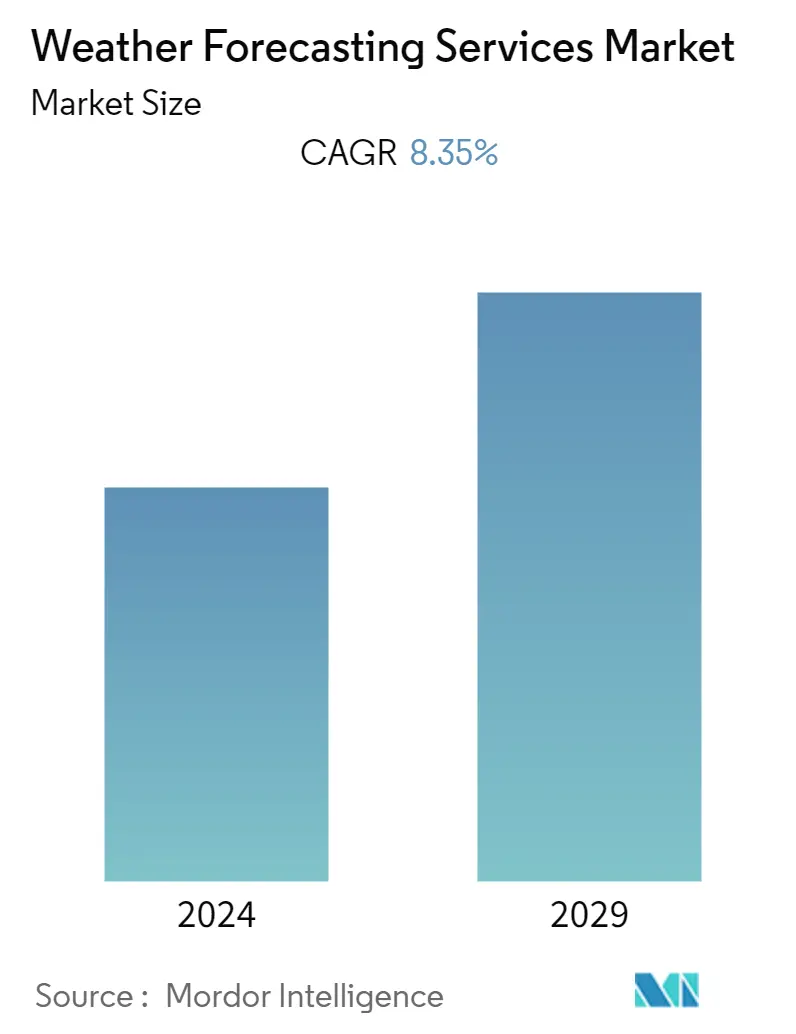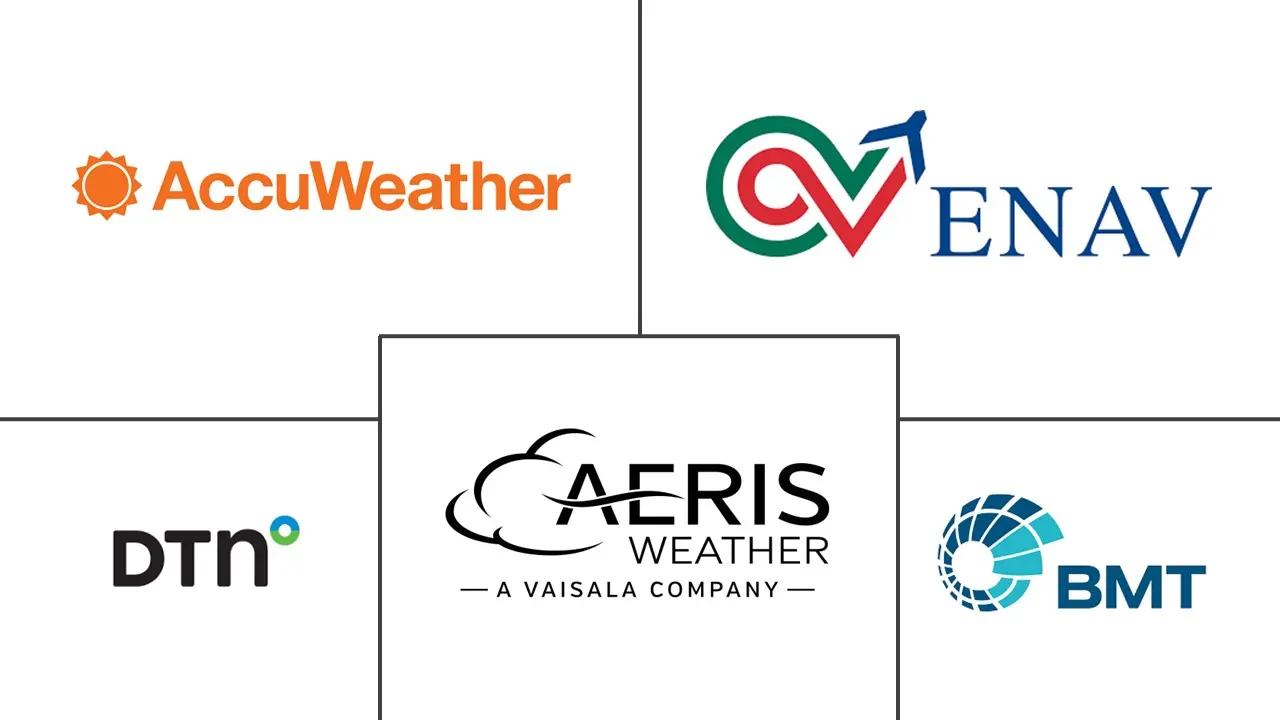Market Size of Weather Forecasting Services Industry

| Study Period | 2019 - 2029 |
| Base Year For Estimation | 2023 |
| CAGR | 8.35 % |
| Fastest Growing Market | Asia Pacific |
| Largest Market | North America |
| Market Concentration | Medium |
Major Players
*Disclaimer: Major Players sorted in no particular order |
Need a report that reflects how COVID-19 has impacted this market and its growth?
Weather Forecasting Services Market Analysis
The weather forecasting services market is valued at USD 2.70 billion in the current year and is expected to reach USD 4.03 billion over five years, growing at a CAGR of 8.35% during the forecast period. The factors expected to drive the growth of the global weather forecasting services market are expanding due to the occurrence of catastrophic events secondary to undesired climatic changes and resulting security concerns. The progressed and authentic weather forecasting accomplished within the stipulated time can prompt significant cost investment funds and help with security against calamities and cataclysmic events. Advanced weather forecasting help to reduce uncertainty like floods, droughts, and other natural disasters. It improved agriculture productivity and was implemented by the industry to track their profitability.
- Weather forecasting services are essential for aviation safety and efficiency. They provide pilots with information about the current weather conditions and forecasts of future conditions. This enables pilots to decide when to take off or land, what route to fly, and how much fuel they need to carry. Weather forecasts also help air traffic controllers plan routes that avoid hazardous weather systems such as thunderstorms or turbulence. In addition, airlines use weather data to optimize their operations by scheduling flights around expected delays due to bad weather. Finally, meteorologists use this data to research climate change and other environmental issues. Media and consumer outlets use weather forecasting services to provide accurate information about current weather conditions and predictions for future weather events. This information can be used in various ways, such as helping people plan their daily activities or providing news reports with up-to-date forecasts.
- Facilities for weather forecasting frequently use advanced, energy-consuming devices and infrastructure. Environmental observation information is a subset of big data that has recently increased exponentially. As a result, weather forecasting centers are mandated to provide integrated solutions that manage weather forecasters' computing needs, data transfer and management, and ownership of the whole cost of these operations. Additionally, the development of supercomputer processing power is projected to make it more comfortable to integrate a combination of high-resolution weather predictions and climate models, producing extraordinarily accurate and exact forecasts.
- Short-range weather forecasting services provide forecasts of conditions up to two weeks in the future. These services provide detailed weather predictions, such as hourly or daily temperature forecasts, precipitation, wind, and other meteorological variables. They are usually based on numerical weather prediction models that use data from weather stations, satellites, and other sources to predict the future state of the atmosphere. Short-range weather forecasting services are used to inform decisions such as when to plant crops, when to schedule outdoor events, and when to take precautions against severe weather.
- On the flip side, since weather conditions vary frequently, weather forecasting models must use contemporary oceanic and atmospheric conditions to resolve future weather. Weather prediction considers humidity, temperature, air pressure, wind speed, and cloud cover. Numerous variables are taken into consideration by weather forecasting models, including latitude and longitude elevation, as well as proximity to water sources, geographic position, and urban constructions.
- The United Nations' World Meteorological Organization raised considerations about the COVID-19 pandemic's effects on weather forecasting and climate change research. Commercial flights take measurements as they soar through the atmospheres, and scientists normally hitched rides on container ships to track conditions over the oceans. With flights grounded and scientists kept off the ships, weather forecasts were made with less data than usual. Climate research also took a hit, as researchers stayed home instead of conducting planned fieldwork, at the University of California.
